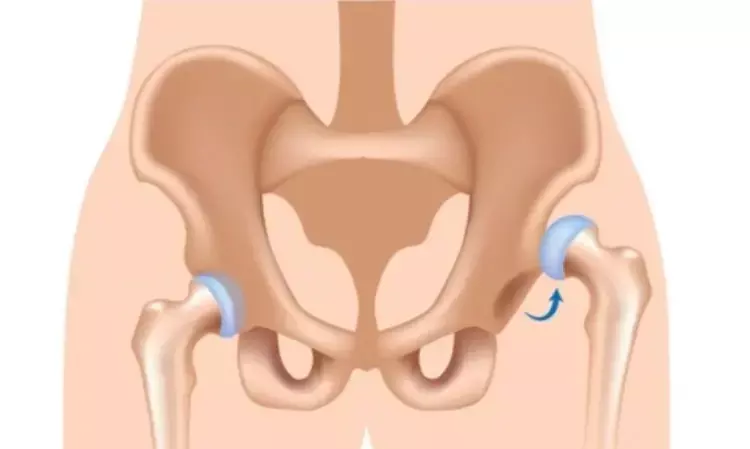- Home
- Medical news & Guidelines
- Anesthesiology
- Cardiology and CTVS
- Critical Care
- Dentistry
- Dermatology
- Diabetes and Endocrinology
- ENT
- Gastroenterology
- Medicine
- Nephrology
- Neurology
- Obstretics-Gynaecology
- Oncology
- Ophthalmology
- Orthopaedics
- Pediatrics-Neonatology
- Psychiatry
- Pulmonology
- Radiology
- Surgery
- Urology
- Laboratory Medicine
- Diet
- Nursing
- Paramedical
- Physiotherapy
- Health news
- Fact Check
- Bone Health Fact Check
- Brain Health Fact Check
- Cancer Related Fact Check
- Child Care Fact Check
- Dental and oral health fact check
- Diabetes and metabolic health fact check
- Diet and Nutrition Fact Check
- Eye and ENT Care Fact Check
- Fitness fact check
- Gut health fact check
- Heart health fact check
- Kidney health fact check
- Medical education fact check
- Men's health fact check
- Respiratory fact check
- Skin and hair care fact check
- Vaccine and Immunization fact check
- Women's health fact check
- AYUSH
- State News
- Andaman and Nicobar Islands
- Andhra Pradesh
- Arunachal Pradesh
- Assam
- Bihar
- Chandigarh
- Chattisgarh
- Dadra and Nagar Haveli
- Daman and Diu
- Delhi
- Goa
- Gujarat
- Haryana
- Himachal Pradesh
- Jammu & Kashmir
- Jharkhand
- Karnataka
- Kerala
- Ladakh
- Lakshadweep
- Madhya Pradesh
- Maharashtra
- Manipur
- Meghalaya
- Mizoram
- Nagaland
- Odisha
- Puducherry
- Punjab
- Rajasthan
- Sikkim
- Tamil Nadu
- Telangana
- Tripura
- Uttar Pradesh
- Uttrakhand
- West Bengal
- Medical Education
- Industry
New technique for proximal femoral resection in non-ambulatory patients with cerebral palsy

Montpellier, France: Proximal femoral resection (PFR) is proposed in non-ambulatory children with cerebral palsy (CP) and a chronic painful dislocation of the coxofemoral joint.
It aims to improve pain, facilitate perineal care, and allow sitting. Several studies have shown the benefit of this intervention; however it can lead to complications.
L. Duporté, M. Delpont, J.Cottalorda et al. describe a new PFR technique introduced by Schoenecker et al. in 2017 at the EPOSNA congress.
Surgical technique:
The procedure is performed under general anaesthesia or spinal anaesthesia. The patient is in the lateral decubitus position. A posterolateral approach is used as according to Moore. The bursa is resected. Short external rotators are sectioned at their femoral insertion exposing the posterior capsule which is incised at the inter-trochancteric line, from the greater trochanter towards the lesser trochanter where iliopsoas is disinserted. The femoral head is exposed by using maximal flexion-internal rotation. Ligamentum teres is disinserted. Osteotomy is performed with an oscillating saw. The first cut is orthogonal to the diaphysis, under the lesser trochanter, taking the residual fibers of iliopsoas. The second cut is orthogonal to the first one, sparing the greater trochanter. The femoral head is mobilized to complete the anterior capsular release of the proximal femur while retaining maximal capsular length. Haemostasis is performed with Horsley's wax on bone sections. The capsule is sutured upon itself with the ligamentum teres by cross stitches of Vicryl 2. Two parallel holes are drilled with a 2 mm drill bit in the central region of the greater trochanter, thus allowing trans-trochanteric capsulodesis withVicryl 2, fixed to a hip flexed at 90◦. A subfascial drain is used during closure.
Results: Three non-ambulatory patients with CP and painful coxofemoral spastic dislocation or subluxation, with follow-up of more than one year. They were operated on with the reported technique with good outcomes.
The authors concluded that - this new technique is simple, does not lengthen the operating time, does not require postoperative traction and allows rapid return to the chair. Its results are particularly promising in non ambulatory patients with CP.
Key Words: Proximal femoral resection, arthroplasty, Cerebral palsy Non-ambulatory patient, Spastic hip dislocation
Further reading:
A new technique for proximal femoral resection in non-ambulatory patients with cerebral palsy
Léonard Duportéa, Marion Delpont, Jérôme Cottalorda, Pauline Joly Monrigal, Djamel Louahem M'Sabahb, Clément Jeandel.
Orthopaedics & Traumatology: Surgery & Research 108 (2022) 103019
https://doi.org/10.1016/j.otsr.2021.103019
MBBS, Dip. Ortho, DNB ortho, MNAMS
Dr Supreeth D R (MBBS, Dip. Ortho, DNB ortho, MNAMS) is a practicing orthopedician with interest in medical research and publishing articles. He completed MBBS from mysore medical college, dip ortho from Trivandrum medical college and sec. DNB from Manipal Hospital, Bengaluru. He has expirence of 7years in the field of orthopedics. He has presented scientific papers & posters in various state, national and international conferences. His interest in writing articles lead the way to join medical dialogues. He can be contacted at editorial@medicaldialogues.in.
Dr Kamal Kant Kohli-MBBS, DTCD- a chest specialist with more than 30 years of practice and a flair for writing clinical articles, Dr Kamal Kant Kohli joined Medical Dialogues as a Chief Editor of Medical News. Besides writing articles, as an editor, he proofreads and verifies all the medical content published on Medical Dialogues including those coming from journals, studies,medical conferences,guidelines etc. Email: drkohli@medicaldialogues.in. Contact no. 011-43720751


